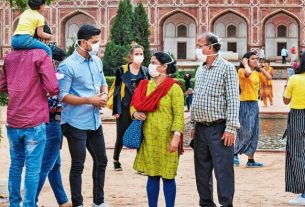New Delhi: The novel coronavirus pandemic has caused unprecedented devastation across the globe. The direct effects in terms of the lives lost to Covid-19 caused by the SARS-CoV-2 virus, the long-term health impacts among those who had a severe infection but miraculously survived, the economic devastation it has left in its wake, and the continued strain on the health infrastructures of all nations – rich and poor – is, by now, well-known. A less well understood but nevertheless clearly observed phenomenon is the absence of non-COVID-19 related illnesses presenting to the hospitals since coronavirus cases started surging. There have been remarkable decreases in the observed incidences of heart attacks (40-60% reduction in the same time period in prior years), strokes, abdominal and trauma emergencies.
Much has been hypothesized about the possible causes of this dramatic reduction – ranging from less stress and lower pollution levels to better eating habits – but what seems improbable is that entire populations have become healthier because of the restrictions imposed by COVID-19. In fact, in prior natural calamities and flu epidemics, the incidence of heart attacks has risen.
The risks associated with delayed cardiac treatment
An overwhelming concern is that patients are trying to minimize their symptoms in an effort to avoid presenting themselves to hospitals. This is likely due to a variety of reasons. There is a “curfew” in the city and its surroundings which creates transportation burdens and difficulties in navigating to the hospital. Folks who cannot work from home have seen their jobs disappear and the specter of financial ruin added to the costs of medical care is daunting. Some patients fear contracting the virus in medical facilities.
While many of these fears are understandable, it is also equally true that delays in getting care for serious cardiac conditions such as heart attacks, heart failure, and heart rhythm abnormalities can cause more harm and end up being fatal than the theoretical risks of contracting the virus if hospitalized. Heart attack patients who do not seek care urgently, risk sudden death, but if they are lucky enough to survive the acute insult, they may be liable to developing weak heart muscles that would leave them incapacitated and at risk for future serious adverse events. There is growing evidence that Covid-19 may itself cause direct heart muscle damage (myocarditis) and mimic many of the symptoms of a heart attack.
Creating a system to safeguard patients
Many hospital facilities are sensitized and have created elaborate protocols to keep their patients and healthcare workers (HCWs) safe from contracting the virus. Everything about the hospital – from the parking lot, emergency department, triage, and patient flow to appropriate wards/ICUs – has been altered to maximize safety. Testing for COVID-19 per ICMR guidelines has been ramped up significantly to isolate the infected. Healthcare workers are equipped with adequate personal protective equipment. While the initial cases in India were imported, the overwhelming majority of COVID-19 now is community-acquired.
As we grapple with COVID-19 and extended lockdown, it is important that we do not give up on the significant advances made in heart disease mortality and morbidity. This was only possible with public health initiatives of education about heart attack symptoms and the importance of early diagnosis and urgent treatment. Hopefully, those lessons do not get lost in the unfolding tragedy of COVID-19. Patients need to recognize that it is imperative that they seek urgent medical attention if they have any heart-related symptoms.




